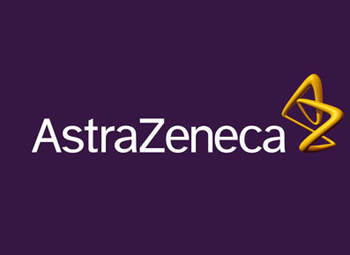US FDA Accepts Regulatory Submission for TAGRISSO (Osimertinib) in 1st-Line EGFR-Mutated Non-Small Cell Lung Cancer
December 19, 2017
Source: finance.yahoo
 783
783

AstraZeneca today announced that the US Food and Drug Administration (FDA) has accepted a supplemental New Drug Application (sNDA) for the use of TAGRISSO® (osimertinib), a third-generation, irreversible epidermal growth factor receptor (EGFR) tyrosine kinase inhibitor (TKI) with clinical activity against central nervous system (CNS) metastases, in the 1st-line treatment of patients with metastatic non-small cell lung cancer (NSCLC) whose tumors have EGFR mutations (exon 19 deletions or exon 21 (L858R) substitution mutations). The FDA has granted TAGRISSO Priority Review status, and previously granted Breakthrough Therapy Designation for TAGRISSO in the 1st-line treatment of patients with metastatic EGFR mutation-positive (EGFRm) NSCLC.
The submission acceptance is based on data from the Phase III FLAURA trial, in which TAGRISSO significantly improved progression-free survival (PFS) compared to current 1st-line EGFR-TKIs, erlotinib or gefitinib, in previously-untreated patients with locally advanced or metastatic EGFRm NSCLC.
Detailed results of the FLAURA trial can be found in the New England Journal of Medicine, published November 18, 2017.
On September 28, 2017, the US NCCN Clinical Practice Guidelines in Oncology (NCCN Guidelines®) were updated to include the use of TAGRISSO in the 1st-line treatment of patients with locally advanced or metastatic EGFRm NSCLC. The use of TAGRISSO in this indication is not yet approved by the FDA.
TAGRISSO once-daily tablets are approved by the FDA for the treatment of patients with metastatic EGFR T790M mutation-positive NSCLC, as detected by an FDA-approved test, whose disease has progressed on or after an EGFR TKI therapy.
TAGRISSO® (osimertinib) Important Safety Information
There are no contraindications for TAGRISSO
Interstitial Lung Disease (ILD)/Pneumonitis occurred in 3.5% and was fatal in 0.6% of 833 TAGRISSO-treated patients. Withhold TAGRISSO and promptly investigate for ILD in patients who present with worsening of respiratory symptoms indicative of ILD (e.g., dyspnea, cough, and fever). Permanently discontinue TAGRISSO if ILD is confirmed
Heart rate-corrected QT (QTc) interval prolongation occurred in TAGRISSO-treated patients. Of the 833 TAGRISSO-treated patients, 0.7% of patients were found to have a QTc > 500 msec, and 2.9% of patients had an increase from baseline QTc > 60 msec. No QTc-related arrhythmias were reported. Conduct periodic monitoring with ECGs and electrolytes in patients with congenital long QTc syndrome, congestive heart failure, electrolyte abnormalities, or those who are taking medications known to prolong the QTc interval. Permanently discontinue TAGRISSO in patients who develop QTc interval prolongation with signs/symptoms of life-threatening arrhythmia
Cardiomyopathy occurred in 1.9% and was fatal in 0.1% of 833 TAGRISSO-treated patients. Left Ventricular Ejection Fraction (LVEF) decline ≥ 10% and a drop to < 50% occurred in 4% of 655 TAGRISSO-treated patients. Conduct cardiac monitoring, including an assessment of LVEF at baseline and during treatment in patients with cardiac risk factors. Assess LVEF in patients who develop relevant cardiac signs or symptoms during treatment. For symptomatic congestive heart failure or persistent, asymptomatic LV dysfunction that does not resolve within 4 weeks, permanently discontinue TAGRISSO
Keratitis was reported in 0.7% of 833 TAGRISSO-treated patients in clinical trials. Promptly refer patients with signs and symptoms suggestive of keratitis (such as eye inflammation, lacrimation, light sensitivity, blurred vision, eye pain, and/or red eye) to an ophthalmologist
Advise pregnant women of the potential risk to a fetus. Advise females of reproductive potential to use effective contraception during TAGRISSO treatment and for 6 weeks after the final dose. Advise males with female partners of reproductive potential to use effective contraception for 4 months after the final dose
The most common adverse reactions (≥20%) in patients treated with TAGRISSO were diarrhea (41%), rash (34%), dry skin (23%), nail toxicity (22%), and fatigue (22%)
Please see complete Prescribing Information including Patient Information.
By DduRead more on
- Alchemab to collaborate with AstraZeneca on prostate cancer research May 7, 2021
- AZ’s Farxiga Gets FDA Priority Review For Heart Failure January 8, 2020
- Fasenra Granted US Orphan Drug Designation for Eosinophilic Oesophagitis October 8, 2019
- Global Recall of CyPass Micro-Stent by Alcon September 3, 2018
- Breakthrough Device Designation Granted to Digital Intervention for Alzheimer’s August 27, 2018
your submission has already been received.
OK
Subscribe
Please enter a valid Email address!
Submit
The most relevant industry news & insight will be sent to you every two weeks.



